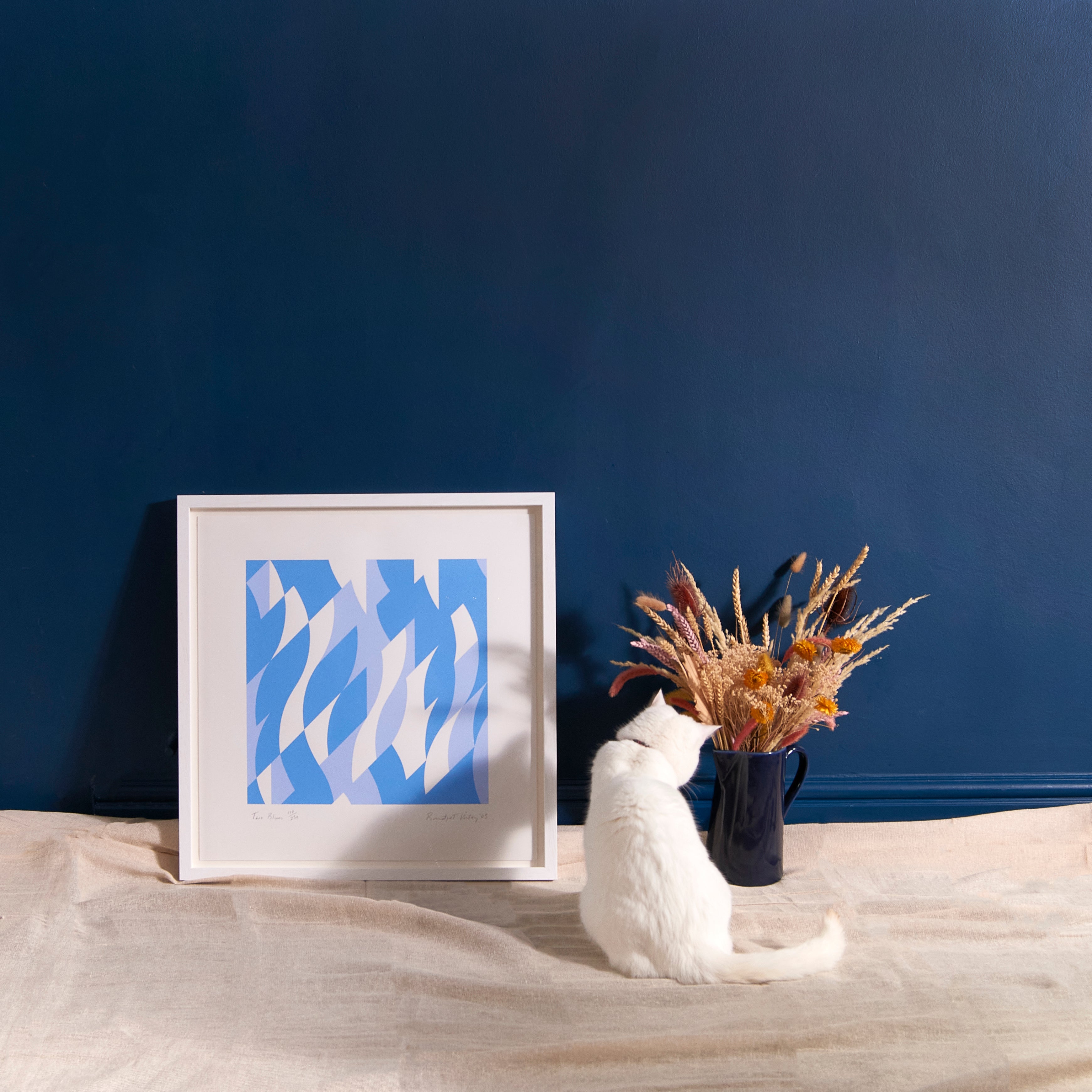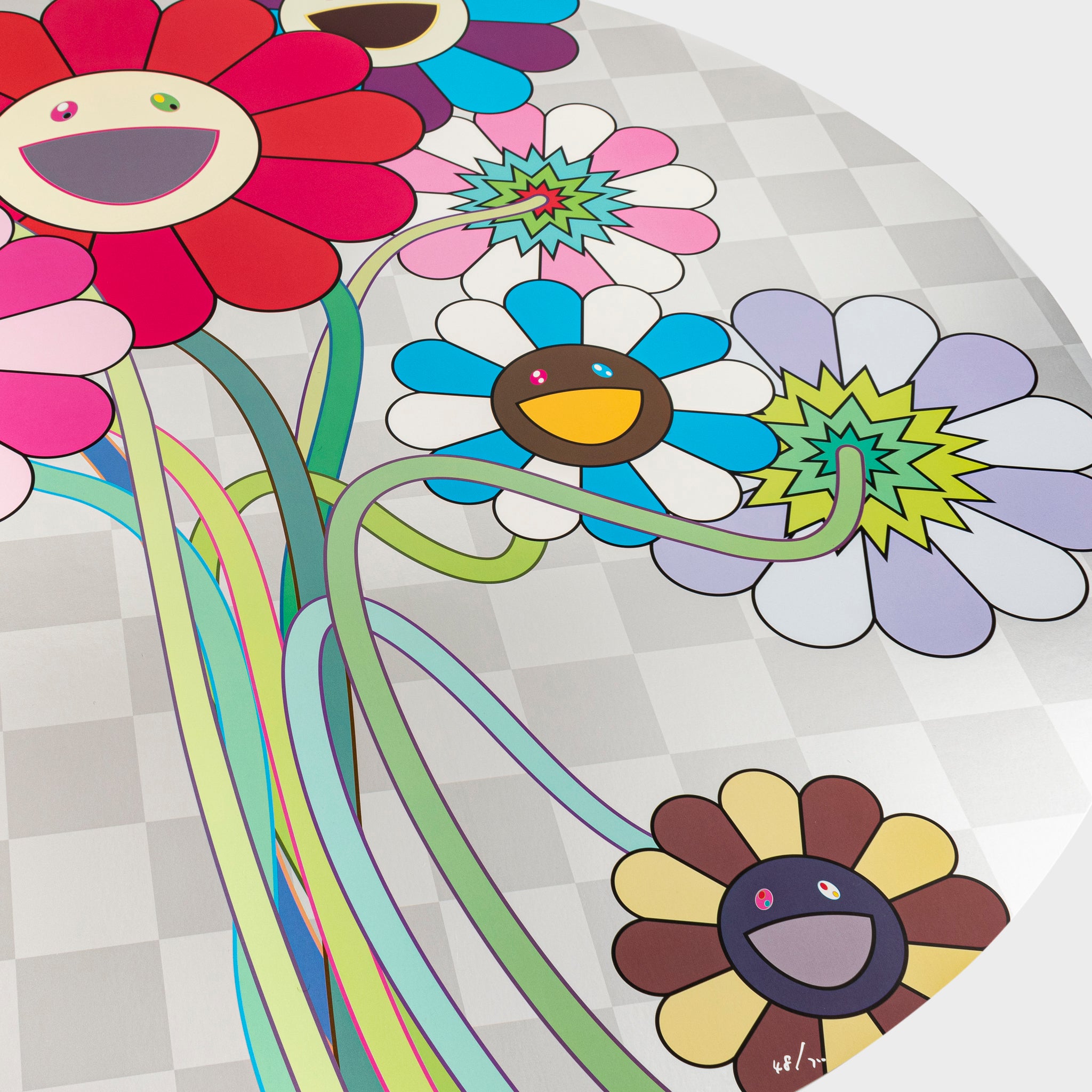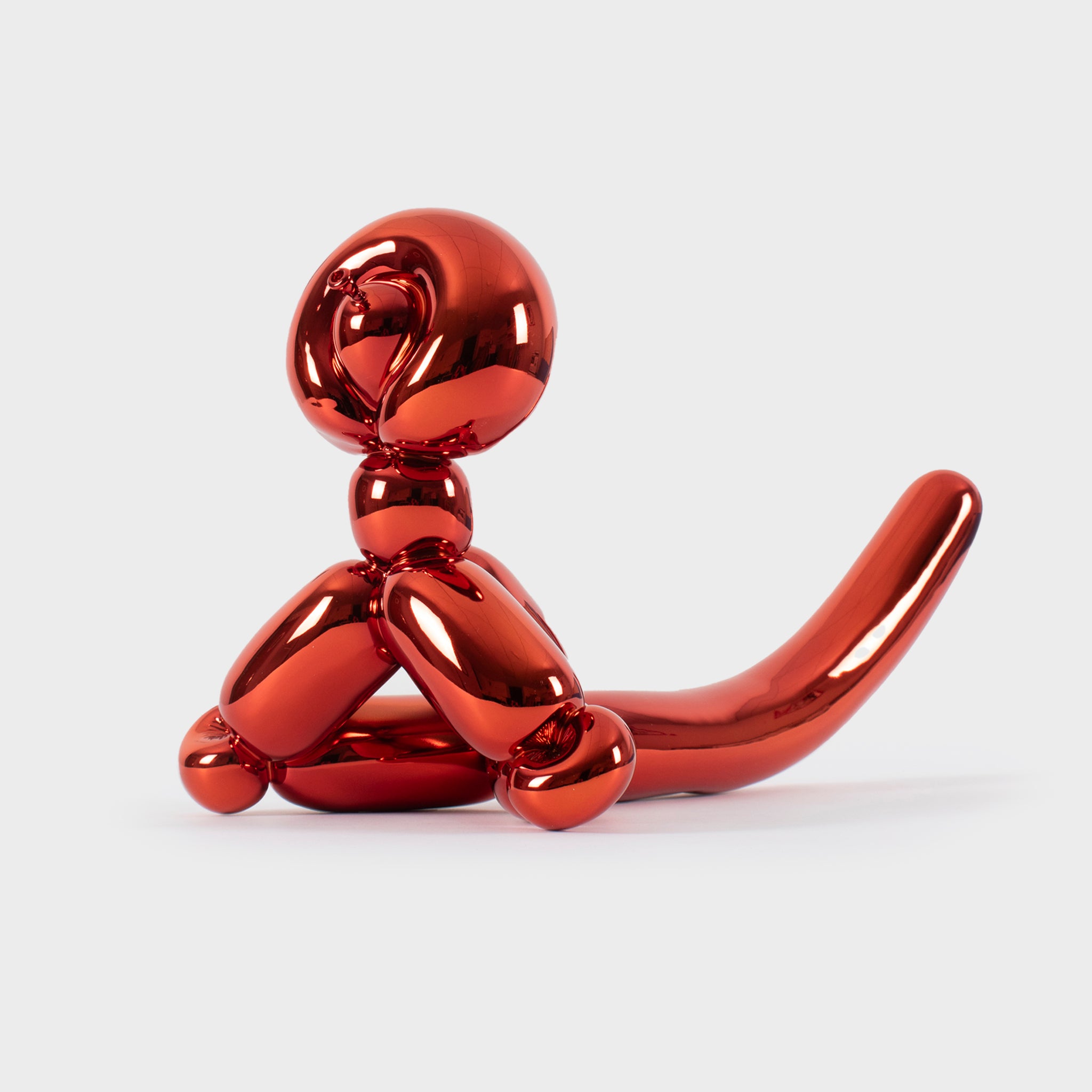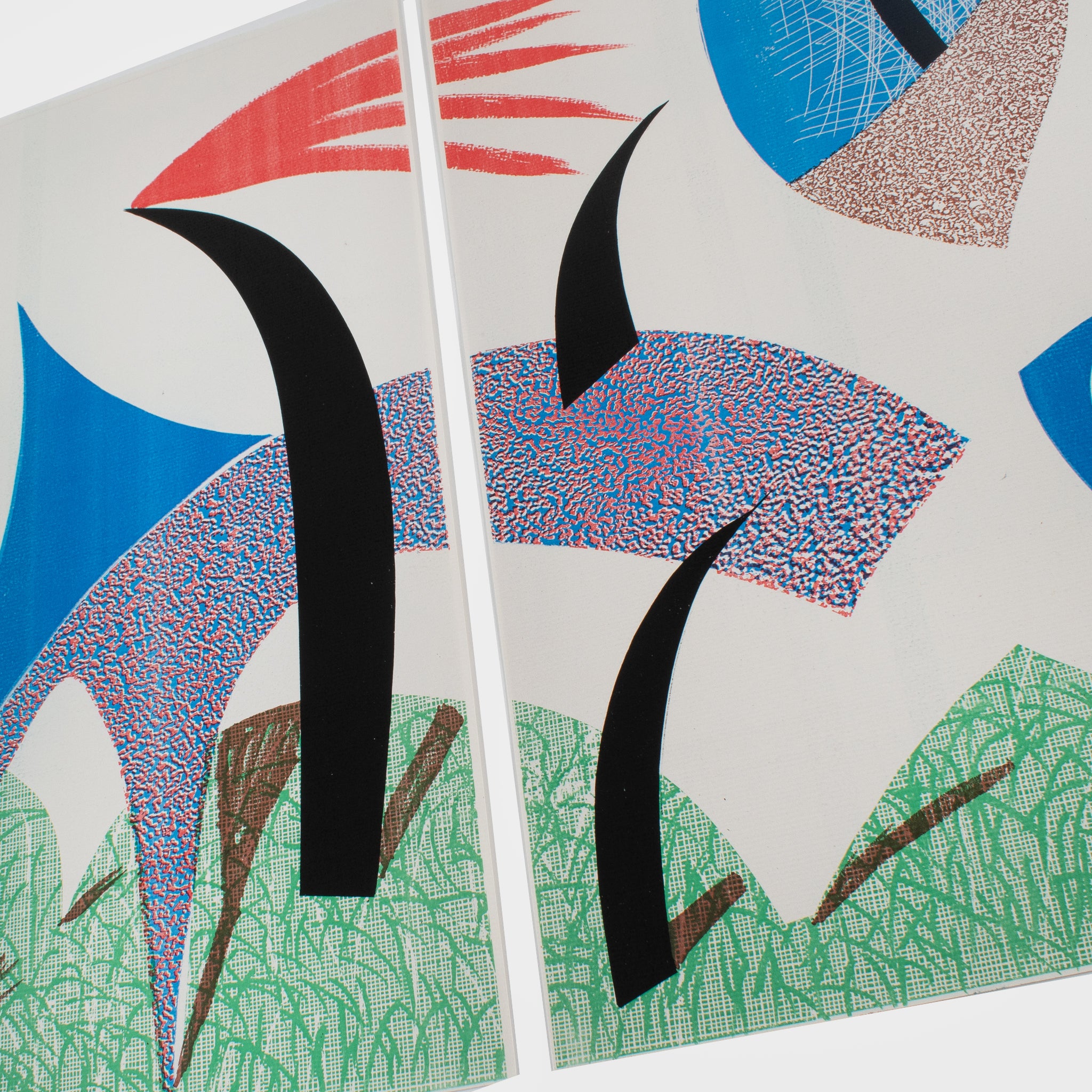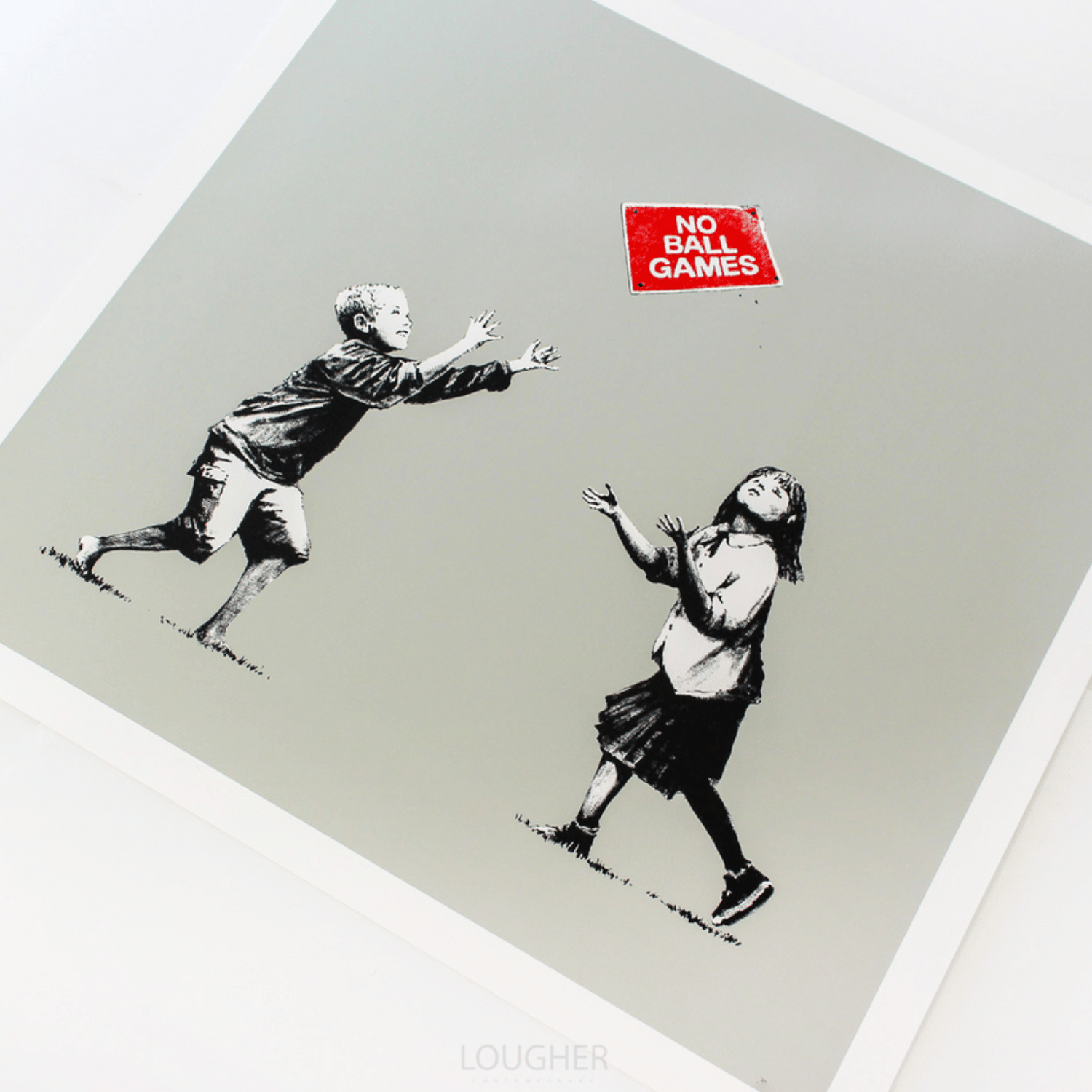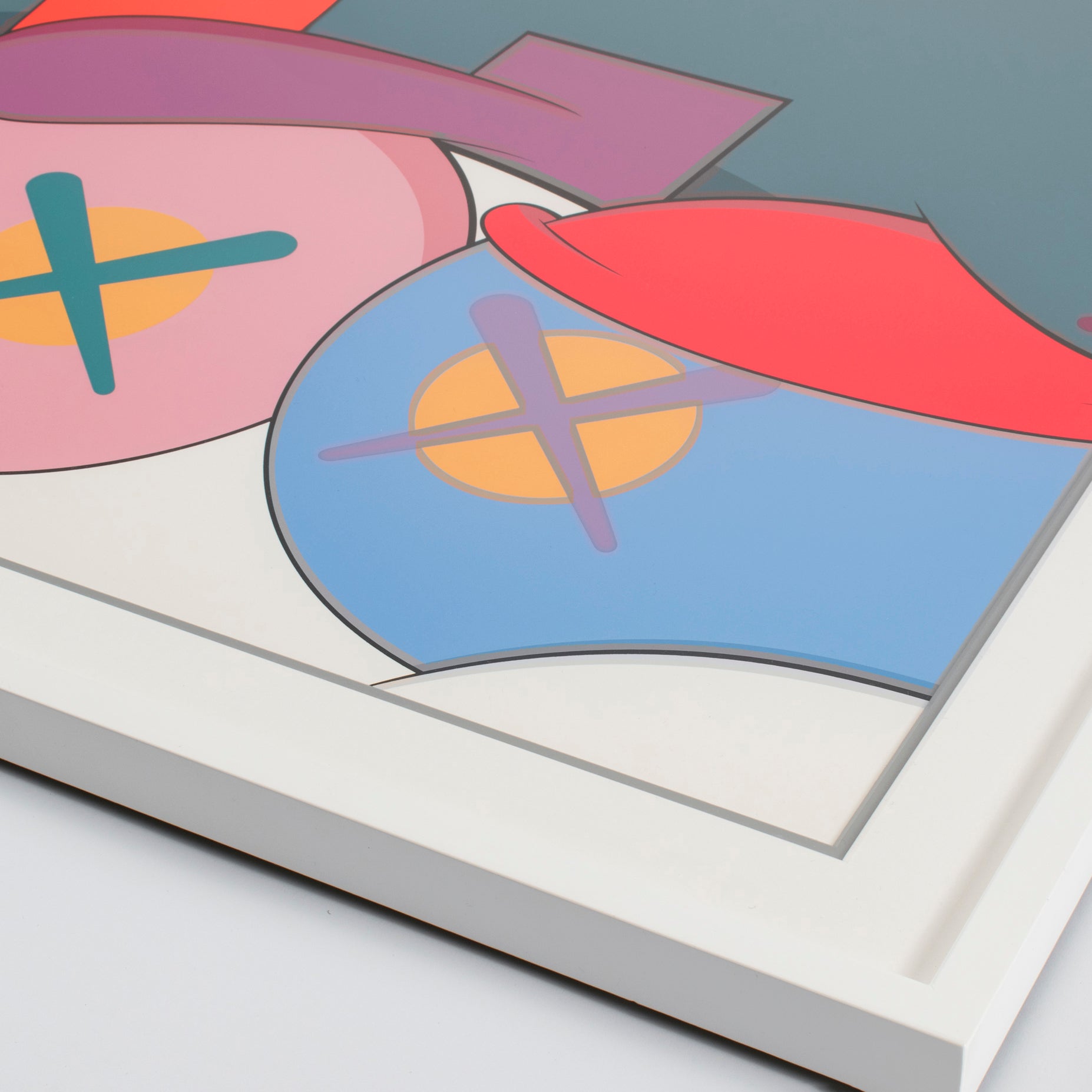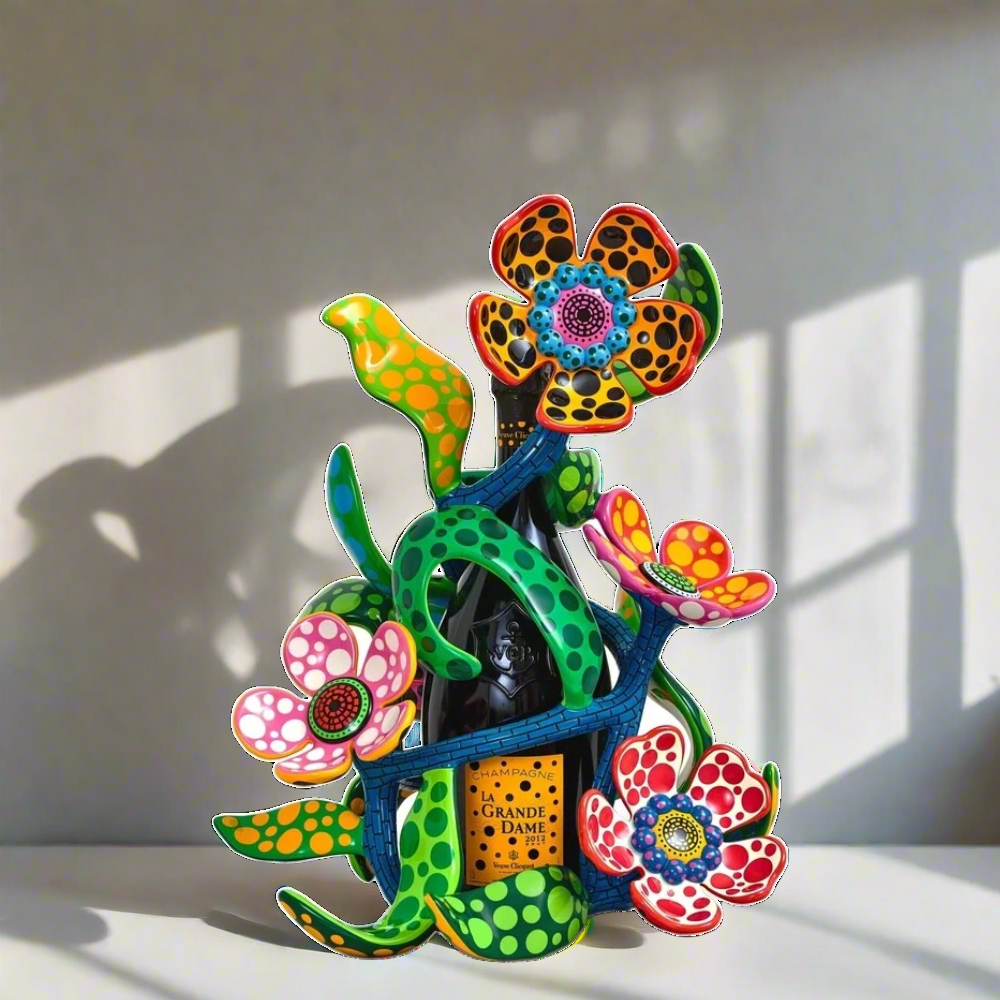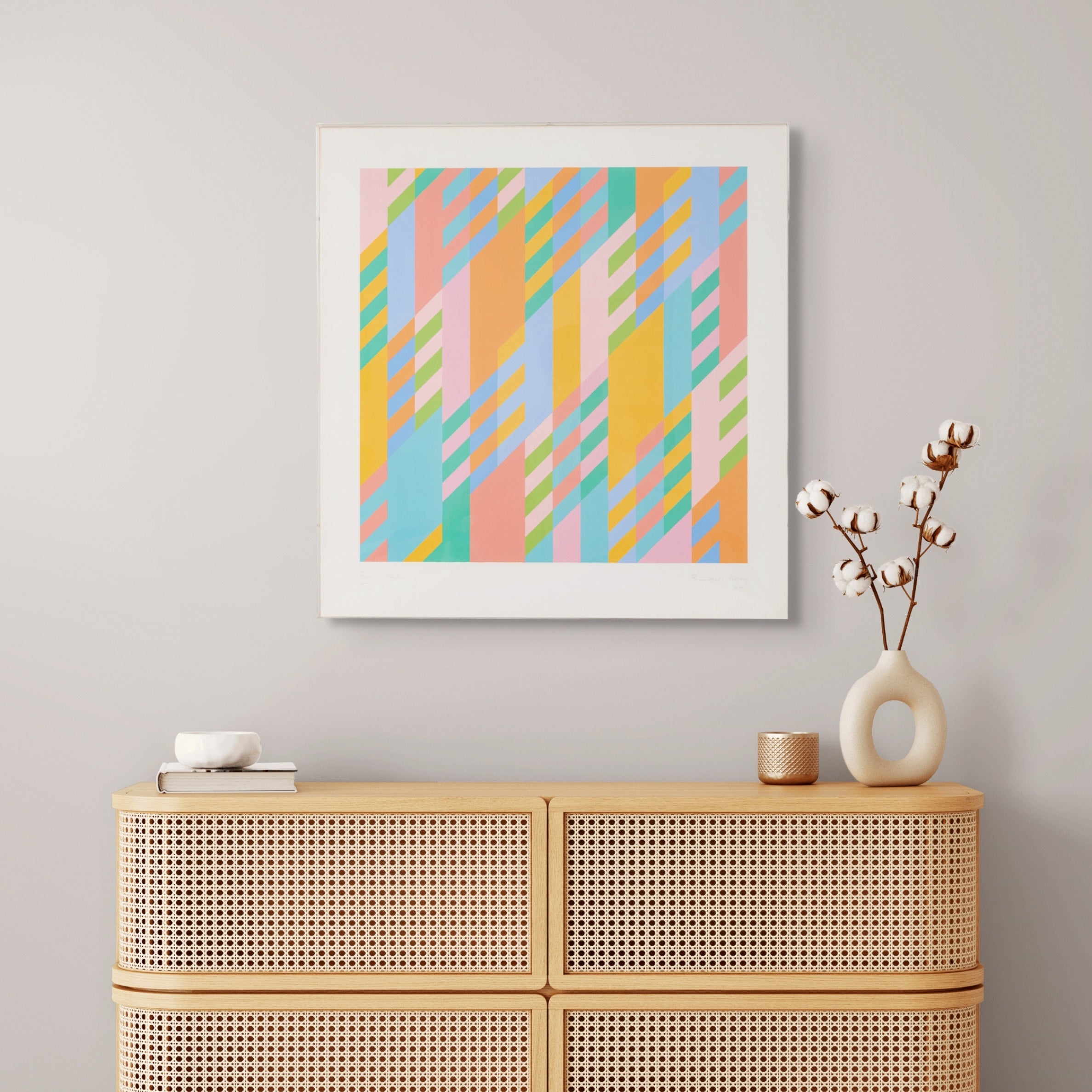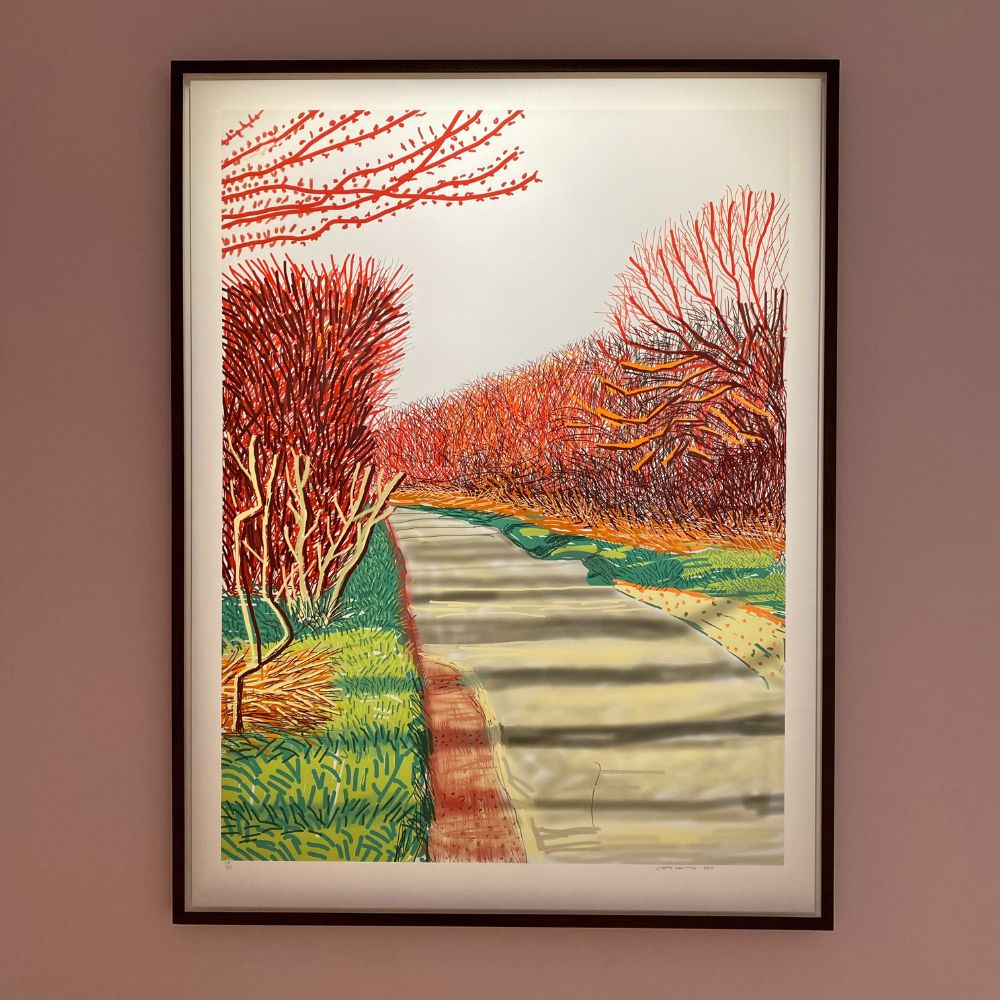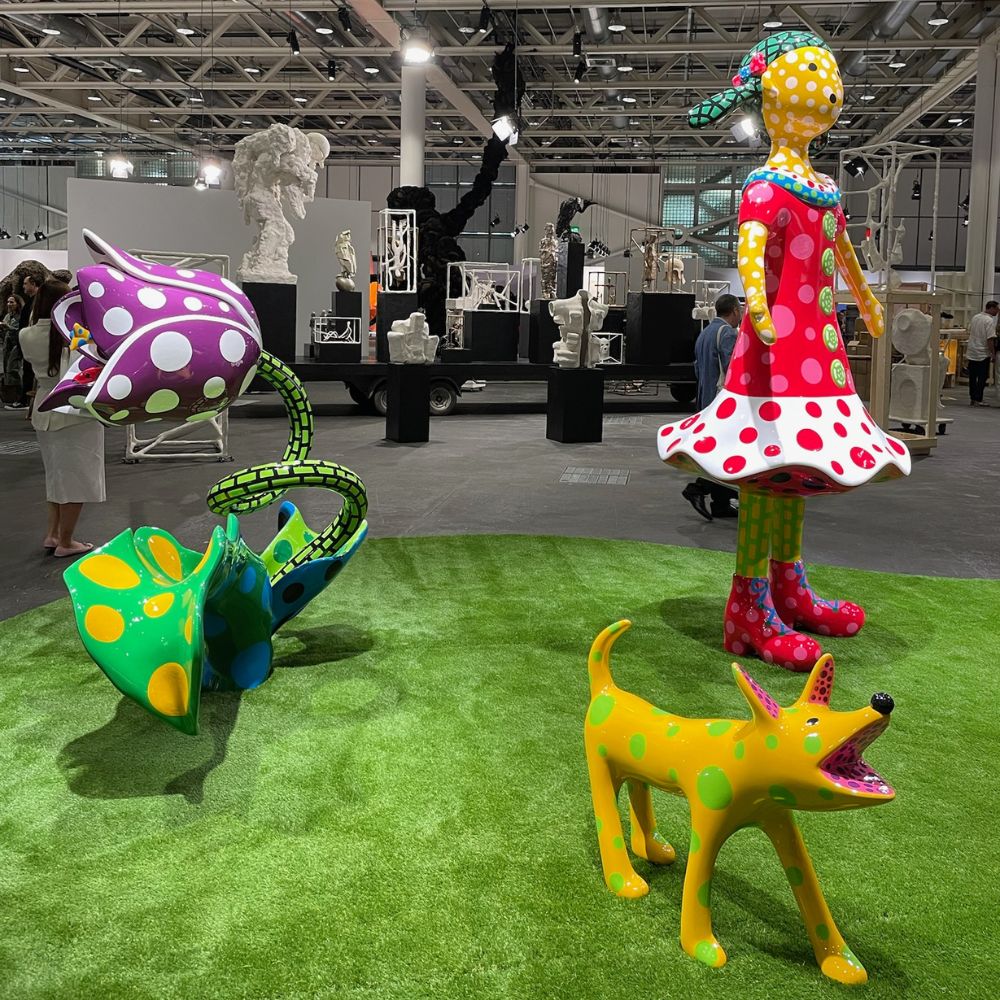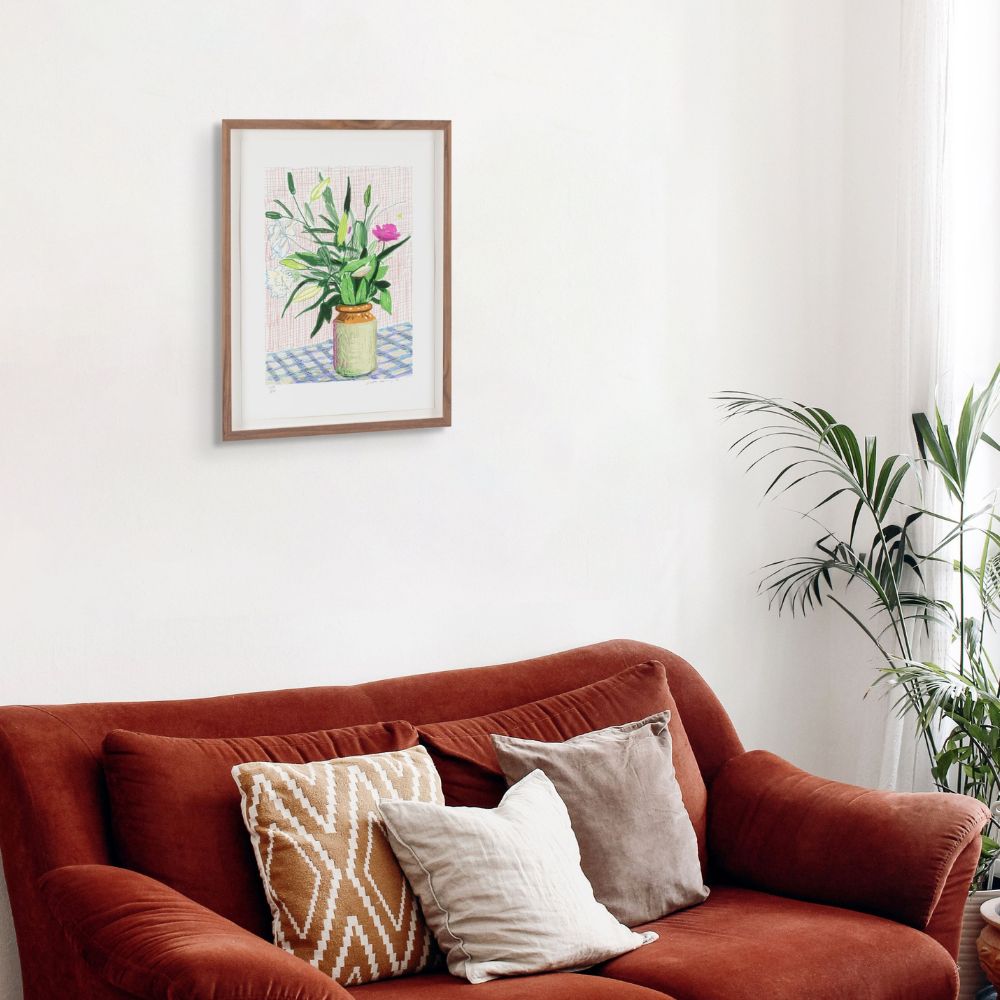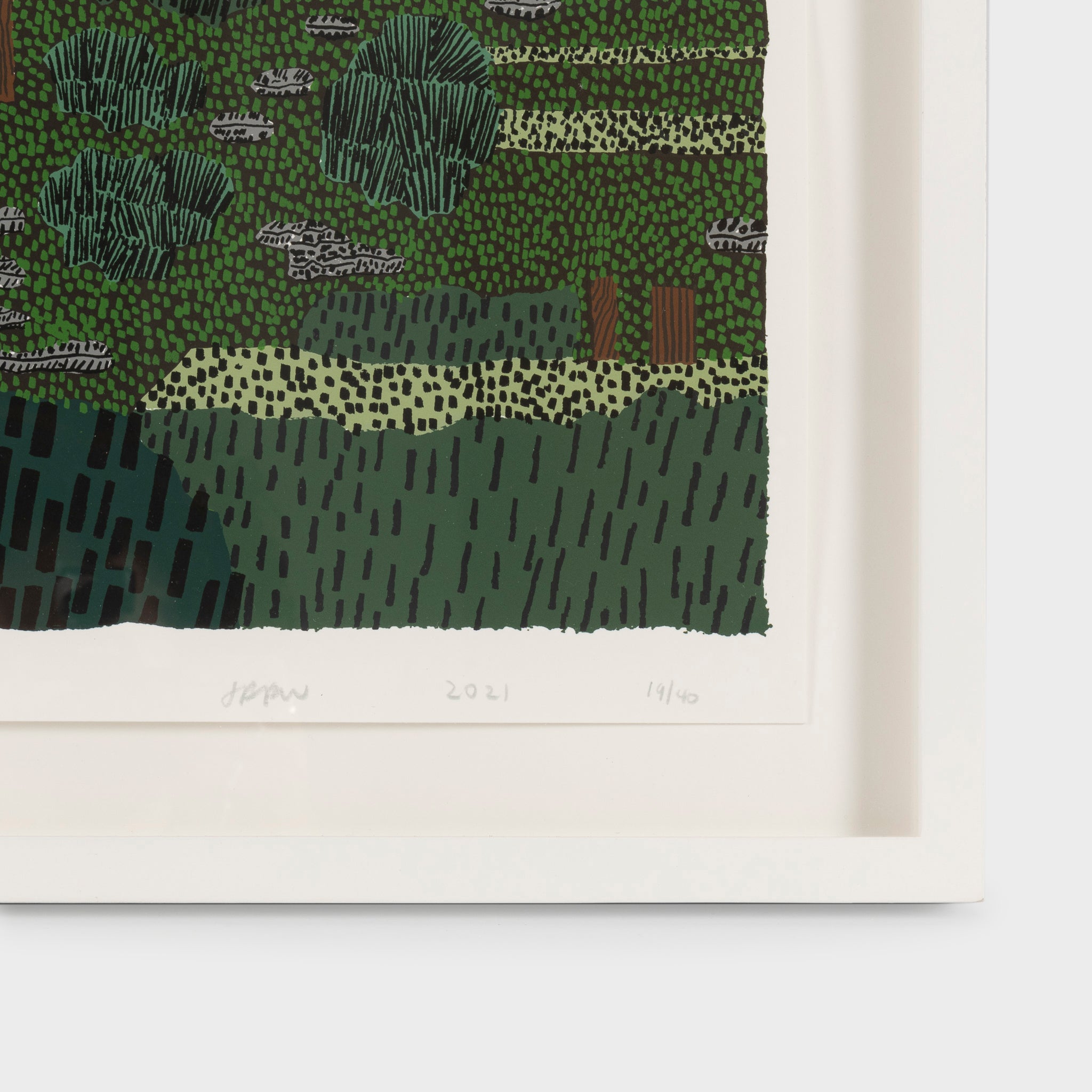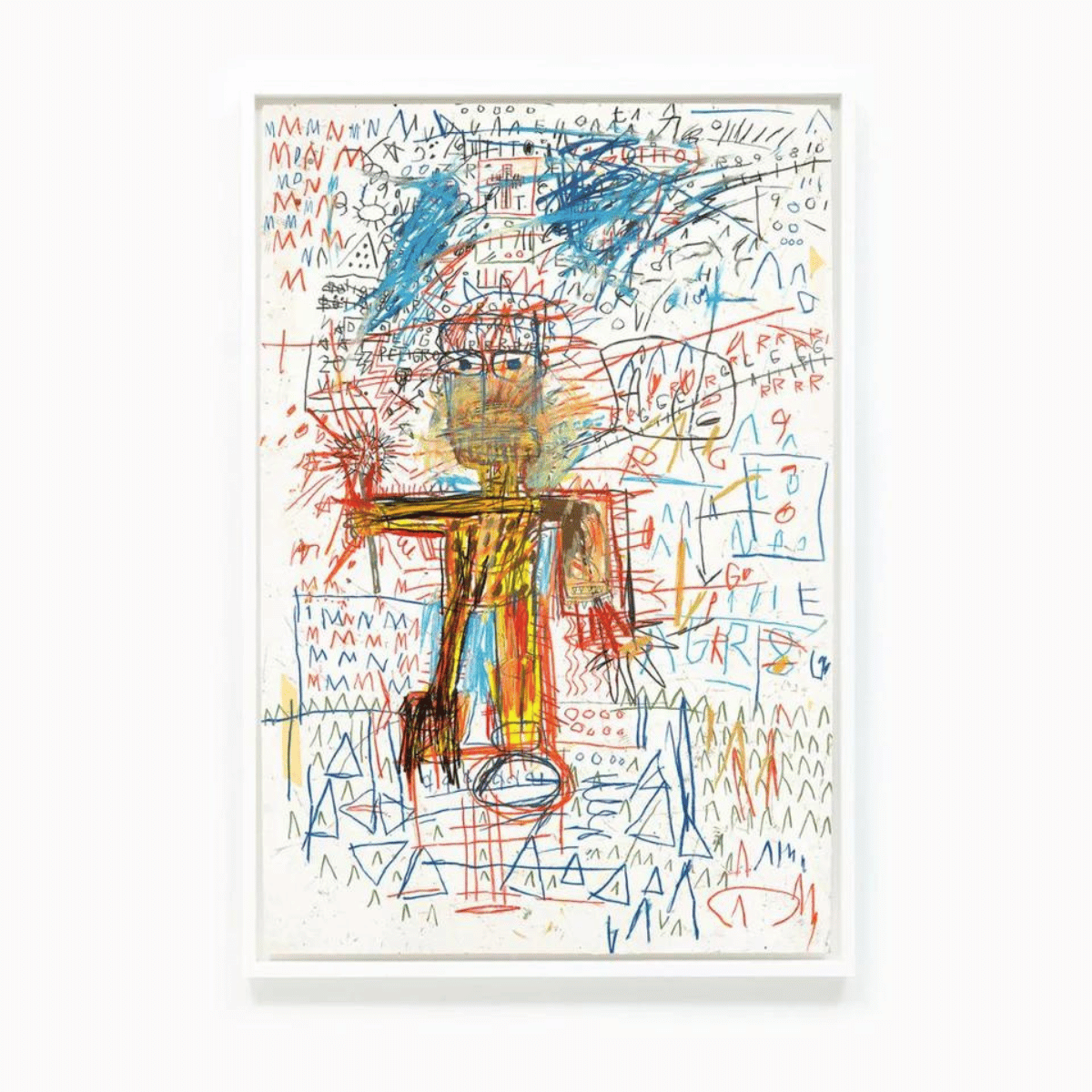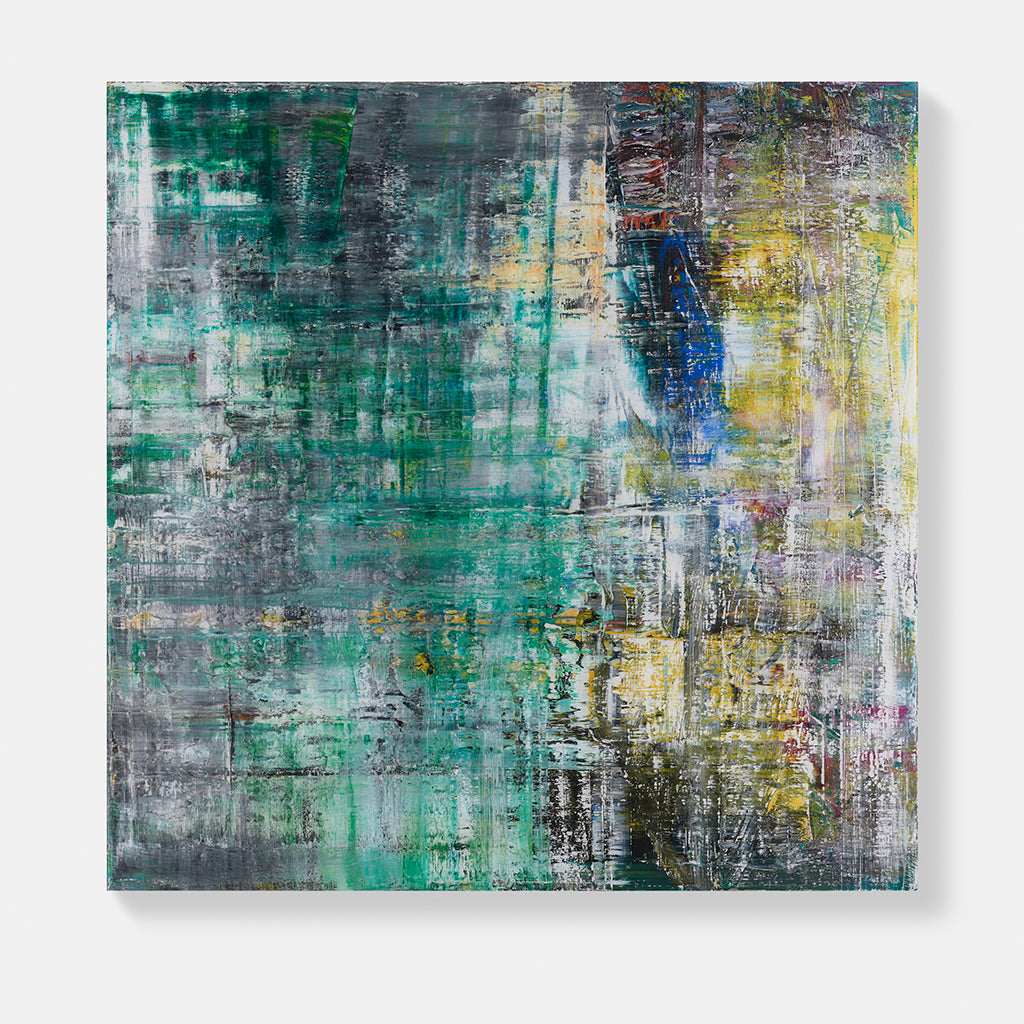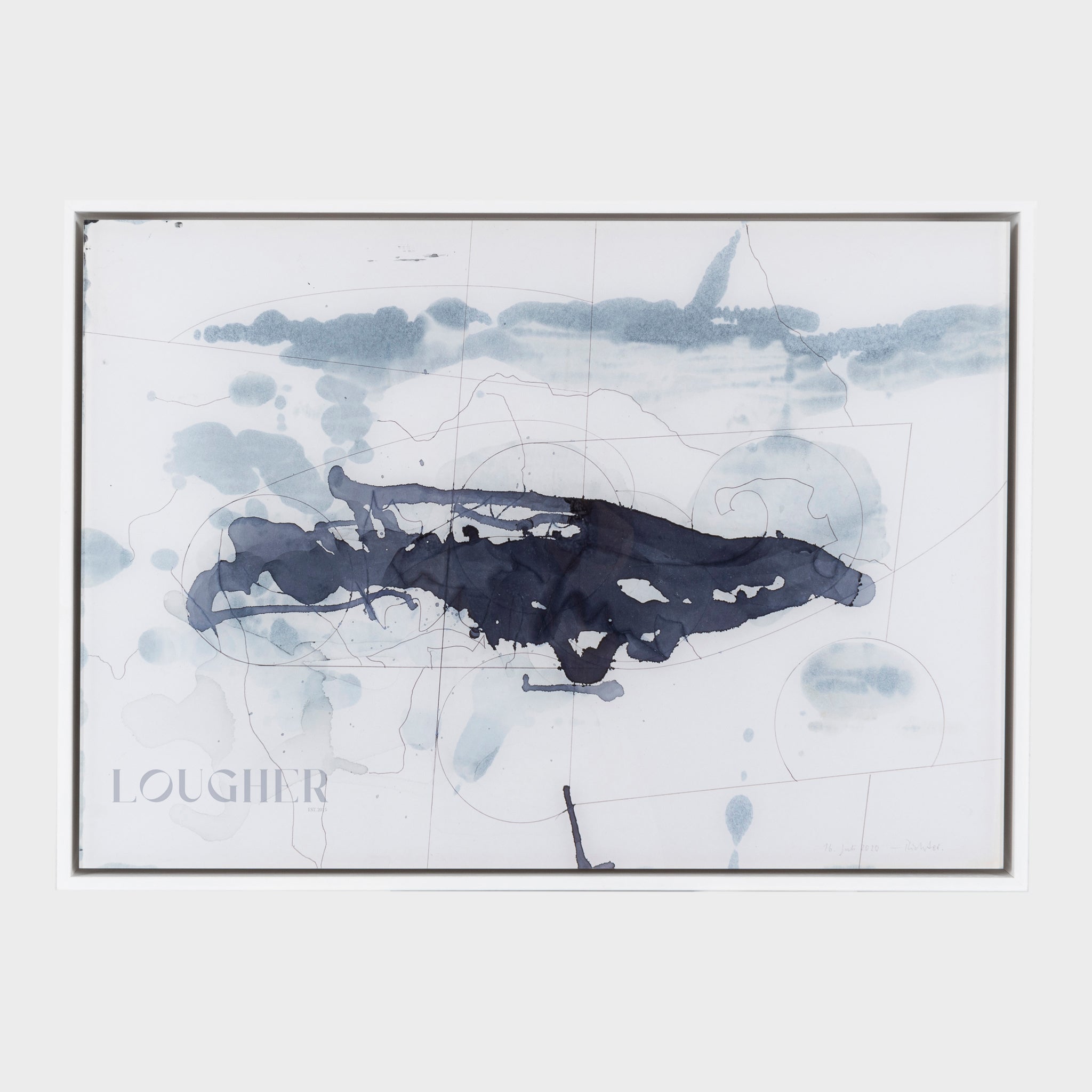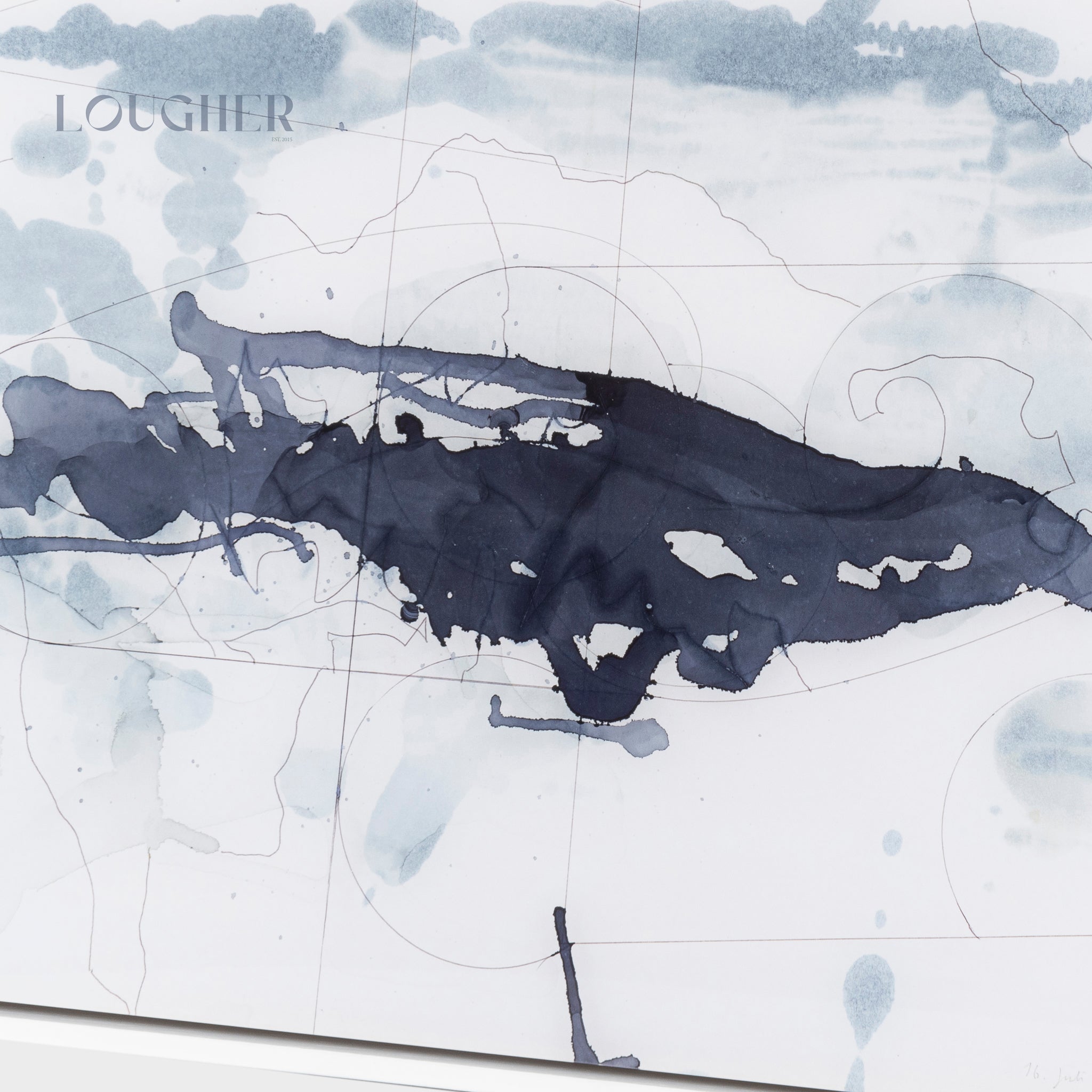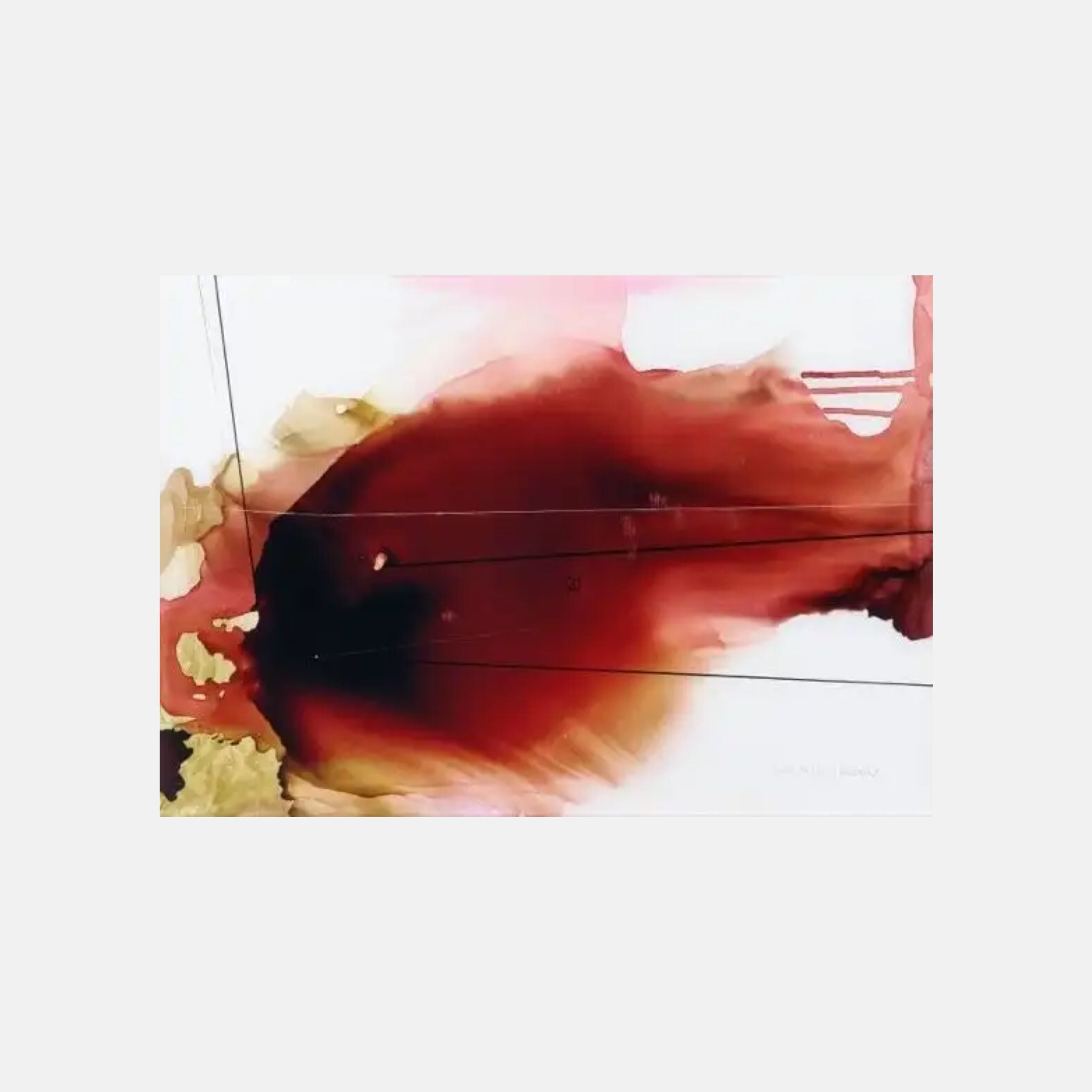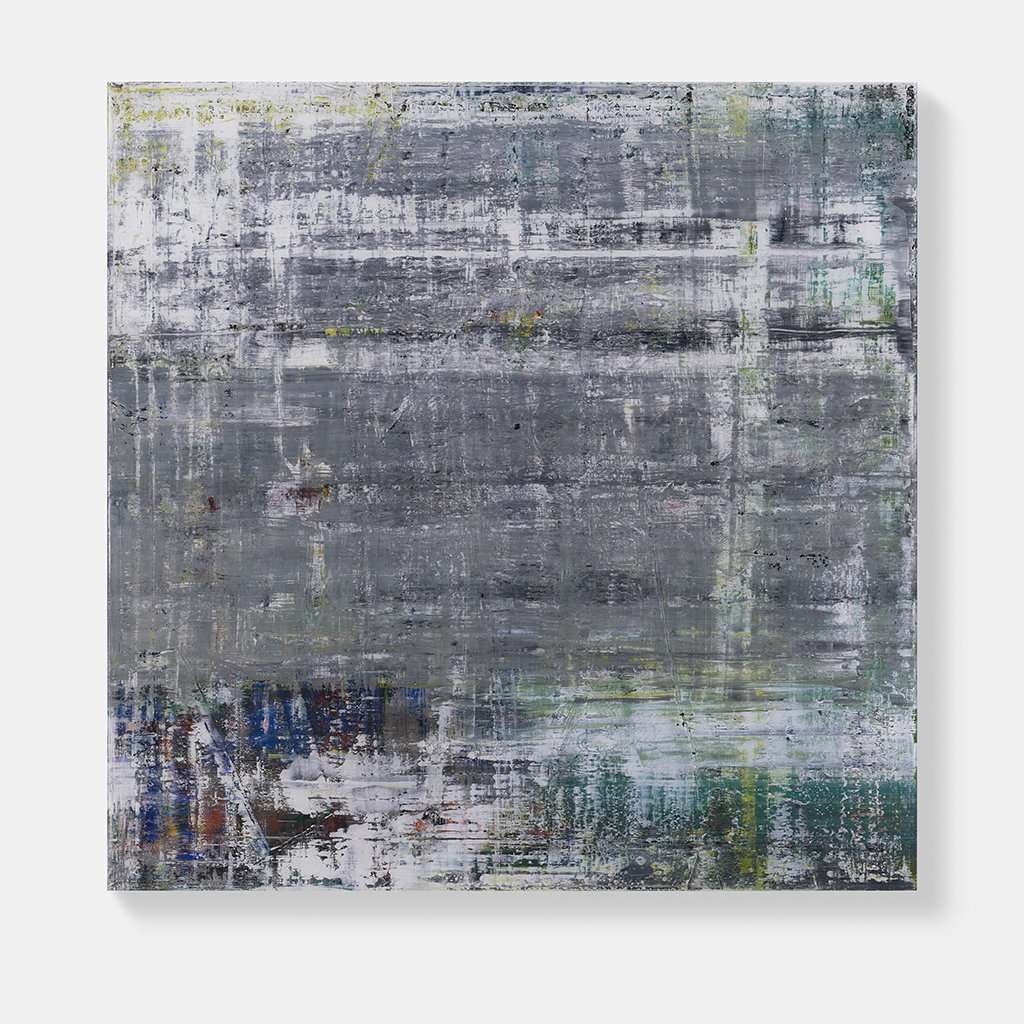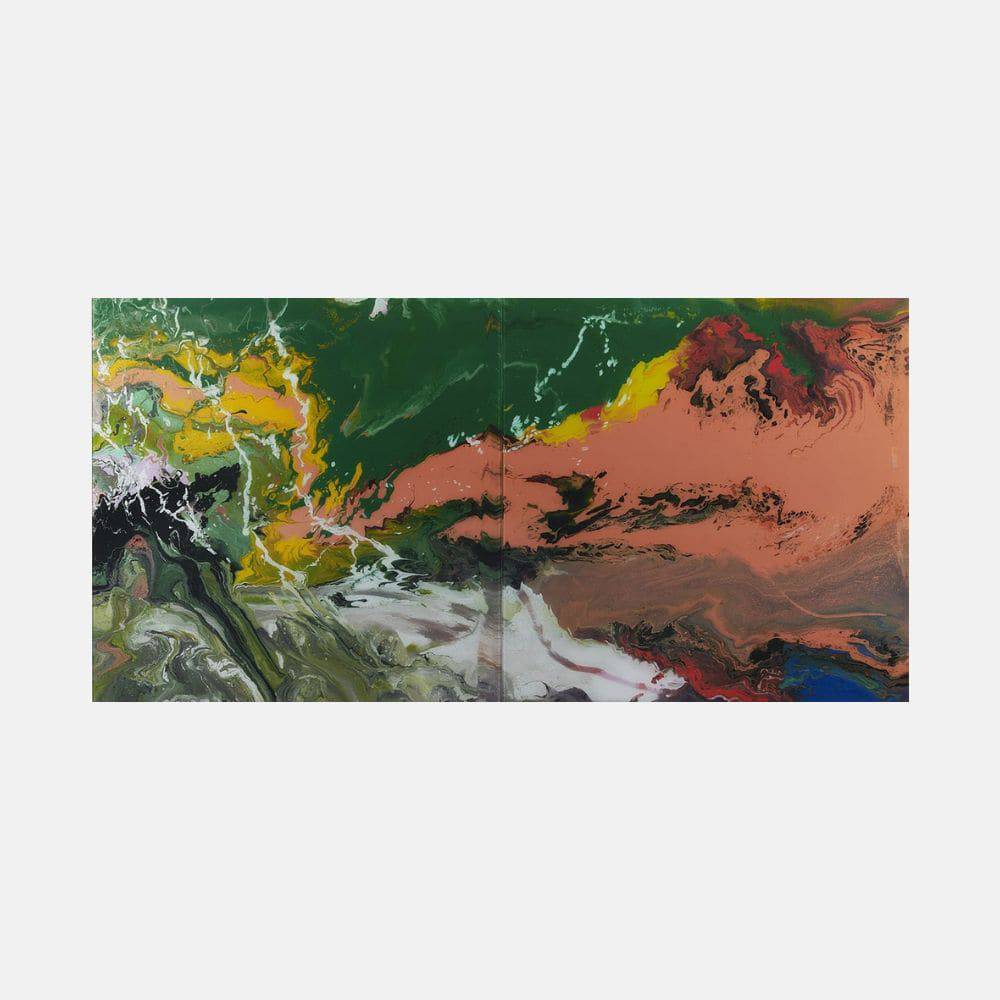About Gerhard Richter
The Gerhard Richter exhibition at the Fondation Louis Vuitton stands as one of the most significant cultural events in Paris this season. Visiting during the energetic week of Basel Paris gave the experience an even sharper contrast. While the fair showcased emerging names and rapid shifts in the art market, the Fondation offered a deeper encounter with an artist whose work has shaped the trajectory of contemporary painting for more than six decades.
Gerhard Richter, born in Dresden in 1932, is widely regarded as one of the most important artists of the post war era. His practice has always been characterised by a profound engagement with history. He grew up amid political upheaval and artistic censorship, and this complex background shaped his understanding of visual truth. From the beginning, Richter approached painting with an awareness that images carry both authority and uncertainty. This exhibition made that duality visible in a thoughtful and chronological arrangement.
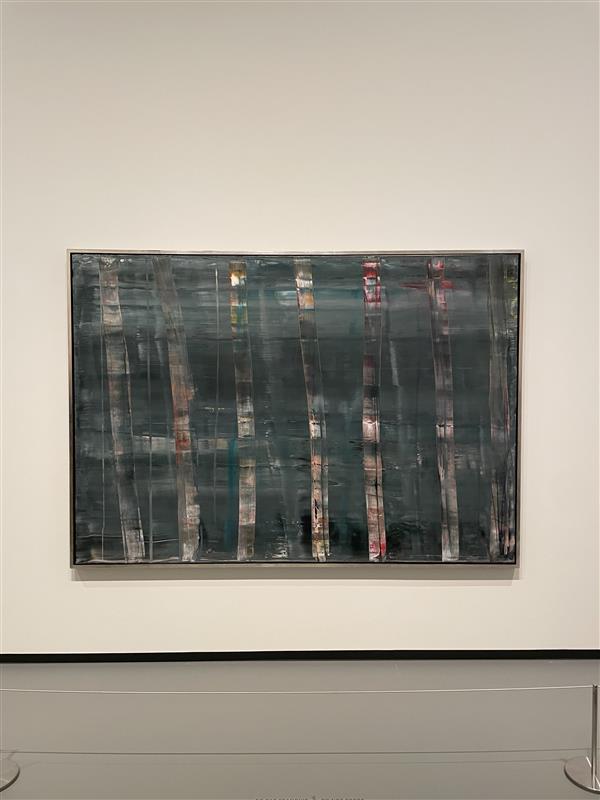
About Gerhard Richter
The Gerhard Richter exhibition at the Fondation Louis Vuitton stands as one of the most significant cultural events in Paris this season. Visiting during the energetic week of Basel Paris gave the experience an even sharper contrast. While the fair showcased emerging names and rapid shifts in the art market, the Fondation offered a deeper encounter with an artist whose work has shaped the trajectory of contemporary painting for more than six decades.
Gerhard Richter, born in Dresden in 1932, is widely regarded as one of the most important artists of the post war era. His practice has always been characterised by a profound engagement with history. He grew up amid political upheaval and artistic censorship, and this complex background shaped his understanding of visual truth. From the beginning, Richter approached painting with an awareness that images carry both authority and uncertainty. This exhibition made that duality visible in a thoughtful and chronological arrangement.


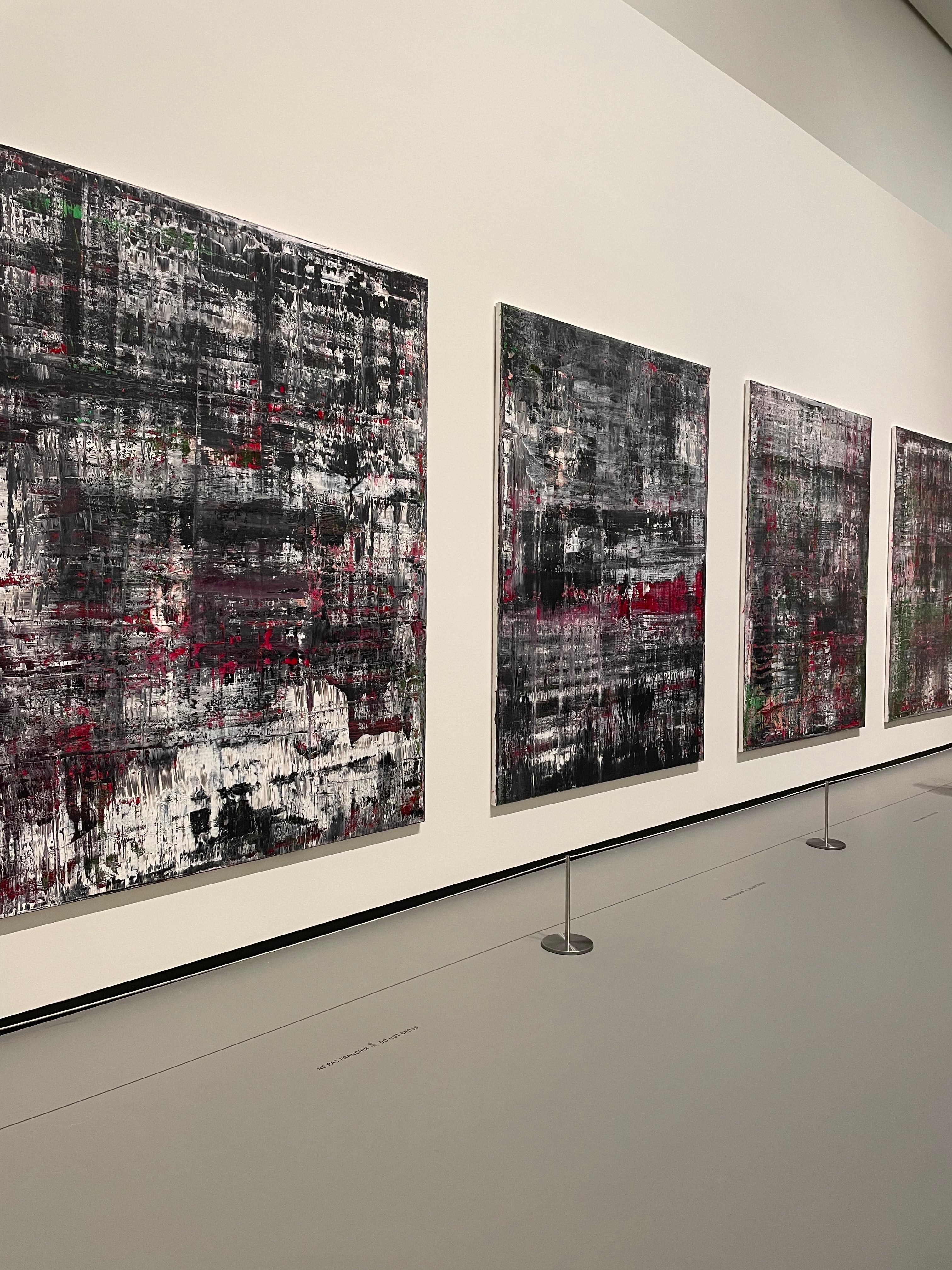


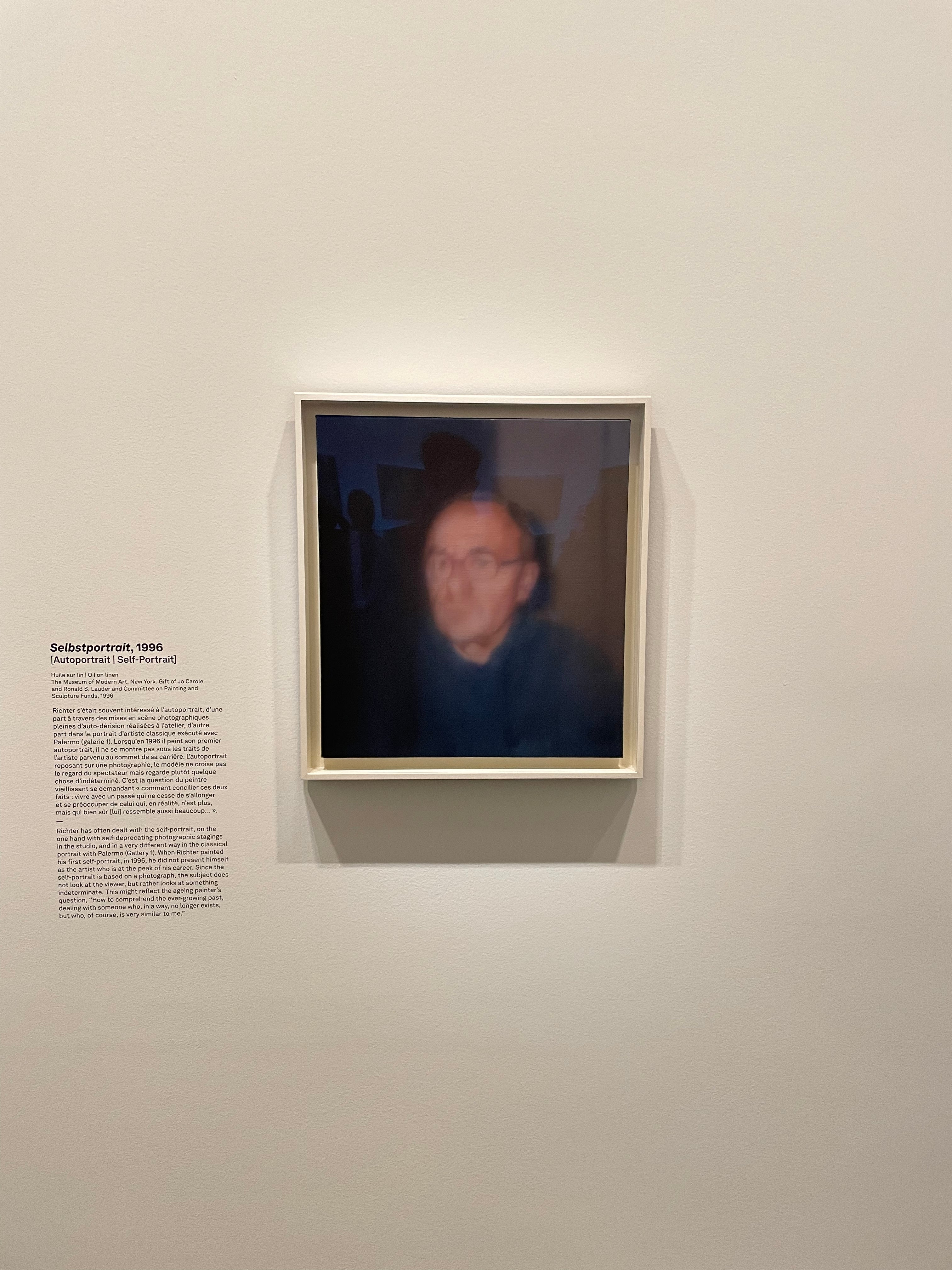
Photo Works & Grey Paintings
The opening rooms presented Richter’s early photo based paintings. Visitors encountered works that at first glance seem close to photographic realism. A second look revealed the subtle blurring that has become a signature of this period. These paintings, drawn from personal photographs and public sources, offered more than simple representation. The blurred edges and softened contrasts asked viewers to consider how memory changes over time. A family snapshot becomes something more ambiguous. A well known press image becomes a gentle commentary on how history is documented. These early works have become central to understanding the shift in painting during the second half of the twentieth century, and the Fondation’s clear presentation helped underline their long term relevance.
Moving through the exhibition, visitors gained a sense of how Richter used painting to approach the idea of uncertainty. His grey paintings, represented here by several key examples, demonstrated how limited colour can still produce surprising emotional effect. These works often appear quiet at first sight. Yet as the viewer spends time with them, the variations in tone and surface become more apparent. The subtle shifts in texture revealed Richter’s interest in the boundaries between seeing, thinking and remembering. The Fondation’s controlled lighting made these delicate differences easier to appreciate.

Photo Works & Grey Paintings
The opening rooms presented Richter’s early photo based paintings. Visitors encountered works that at first glance seem close to photographic realism. A second look revealed the subtle blurring that has become a signature of this period. These paintings, drawn from personal photographs and public sources, offered more than simple representation. The blurred edges and softened contrasts asked viewers to consider how memory changes over time. A family snapshot becomes something more ambiguous. A well known press image becomes a gentle commentary on how history is documented. These early works have become central to understanding the shift in painting during the second half of the twentieth century, and the Fondation’s clear presentation helped underline their long term relevance.
Moving through the exhibition, visitors gained a sense of how Richter used painting to approach the idea of uncertainty. His grey paintings, represented here by several key examples, demonstrated how limited colour can still produce surprising emotional effect. These works often appear quiet at first sight. Yet as the viewer spends time with them, the variations in tone and surface become more apparent. The subtle shifts in texture revealed Richter’s interest in the boundaries between seeing, thinking and remembering. The Fondation’s controlled lighting made these delicate differences easier to appreciate.
Abstract works
The highlight for many visitors was the group of Richter abstract paintings, which have become some of the most recognised and admired works in contemporary art. These large canvases, created through repeated layering of pigment and the use of wide squeegees, formed a major part of the exhibition. The Fondation Louis Vuitton is known for its generous gallery spaces, and these rooms allowed the abstract works to be shown at their full scale. This was important because the physical presence of the canvases is central to their impact.
Richter’s abstraction combines planning with unpredictability. Each painting is built up over time, with earlier layers sometimes visible and sometimes hidden. Strong passages of colour appear beside thin washes or scraped areas. In some places, small details show through from layers that might have been applied weeks or months earlier. These paintings encourage slow looking. Instead of a single focal point, the viewer discovers many moments of interest, almost like reading a long text. This quality explains why Richter’s abstract works have become essential reference points in discussions of the future of painting.
One of the most effective aspects of the exhibition was the decision to show the abstract works in a way that allowed visitors to understand their variety. Some canvases had bright and vivid colours, while others were dominated by cooler tones. Some suggested movement, as if the paint had been pushed across the surface in a single gesture. Others appeared built from many small moments of adjustment. This variety helped communicate the long period of experimentation that has defined Richter’s career. Rather than treating abstraction as a single idea, the exhibition showed it as a field of ongoing investigation.
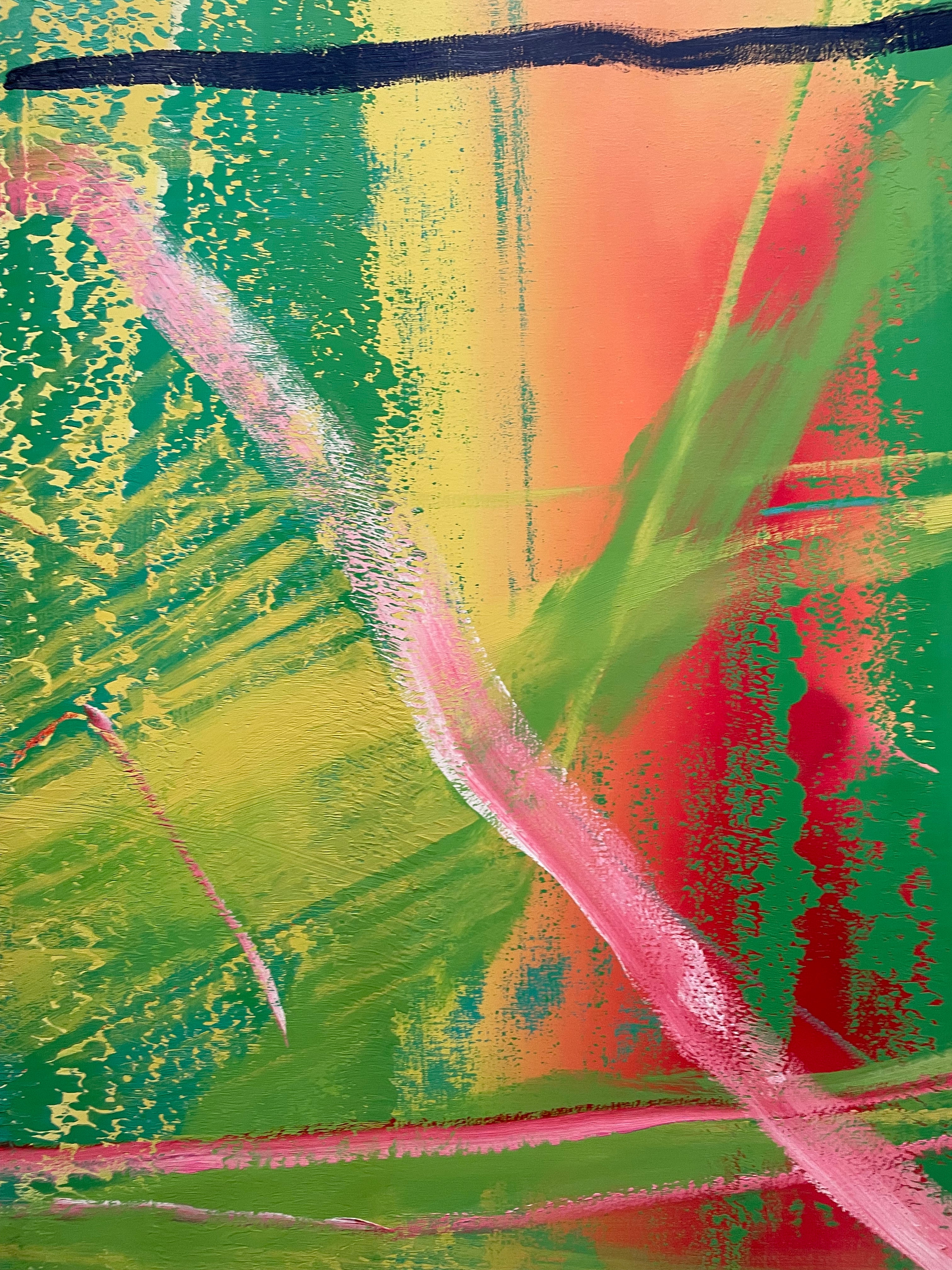
Abstract works
The highlight for many visitors was the group of Richter abstract paintings, which have become some of the most recognised and admired works in contemporary art. These large canvases, created through repeated layering of pigment and the use of wide squeegees, formed a major part of the exhibition. The Fondation Louis Vuitton is known for its generous gallery spaces, and these rooms allowed the abstract works to be shown at their full scale. This was important because the physical presence of the canvases is central to their impact.
Richter’s abstraction combines planning with unpredictability. Each painting is built up over time, with earlier layers sometimes visible and sometimes hidden. Strong passages of colour appear beside thin washes or scraped areas. In some places, small details show through from layers that might have been applied weeks or months earlier. These paintings encourage slow looking. Instead of a single focal point, the viewer discovers many moments of interest, almost like reading a long text. This quality explains why Richter’s abstract works have become essential reference points in discussions of the future of painting.
One of the most effective aspects of the exhibition was the decision to show the abstract works in a way that allowed visitors to understand their variety. Some canvases had bright and vivid colours, while others were dominated by cooler tones. Some suggested movement, as if the paint had been pushed across the surface in a single gesture. Others appeared built from many small moments of adjustment. This variety helped communicate the long period of experimentation that has defined Richter’s career. Rather than treating abstraction as a single idea, the exhibition showed it as a field of ongoing investigation.


Final Thoughts
Beyond the main rooms, the exhibition offered contextual material that helped visitors understand Richter’s long engagement with photography, his use of chance, and his view of painting as a continuous enquiry rather than a fixed method. This supporting material was presented in a straightforward way that was helpful without overwhelming the artwork. Taken as a whole, the Gerhard Richter exhibition at the Fondation Louis Vuitton succeeded in presenting a clear and comprehensive picture of a major artist’s career. It showed how Richter’s work remains relevant to discussions of abstraction, memory and visual culture. While our visit happened to coincide with Basel Paris, the exhibition itself felt entirely separate from the short term rhythms of the art market. It offered a rare opportunity to study a long career in depth, without distraction and with a strong sense of historical perspective.
For visitors interested in contemporary art in Paris, or for anyone wanting to understand why Richter is considered one of the most important painters of the modern era, this exhibition provided an informative and rewarding experience. It demonstrated the power of careful curation, thoughtful presentation and the lasting appeal of an artist whose work continues to shape conversations in museums, studios and universities around the world.

Final Thoughts
Beyond the main rooms, the exhibition offered contextual material that helped visitors understand Richter’s long engagement with photography, his use of chance, and his view of painting as a continuous enquiry rather than a fixed method. This supporting material was presented in a straightforward way that was helpful without overwhelming the artwork. Taken as a whole, the Gerhard Richter exhibition at the Fondation Louis Vuitton succeeded in presenting a clear and comprehensive picture of a major artist’s career. It showed how Richter’s work remains relevant to discussions of abstraction, memory and visual culture. While our visit happened to coincide with Basel Paris, the exhibition itself felt entirely separate from the short term rhythms of the art market. It offered a rare opportunity to study a long career in depth, without distraction and with a strong sense of historical perspective.
For visitors interested in contemporary art in Paris, or for anyone wanting to understand why Richter is considered one of the most important painters of the modern era, this exhibition provided an informative and rewarding experience. It demonstrated the power of careful curation, thoughtful presentation and the lasting appeal of an artist whose work continues to shape conversations in museums, studios and universities around the world.

